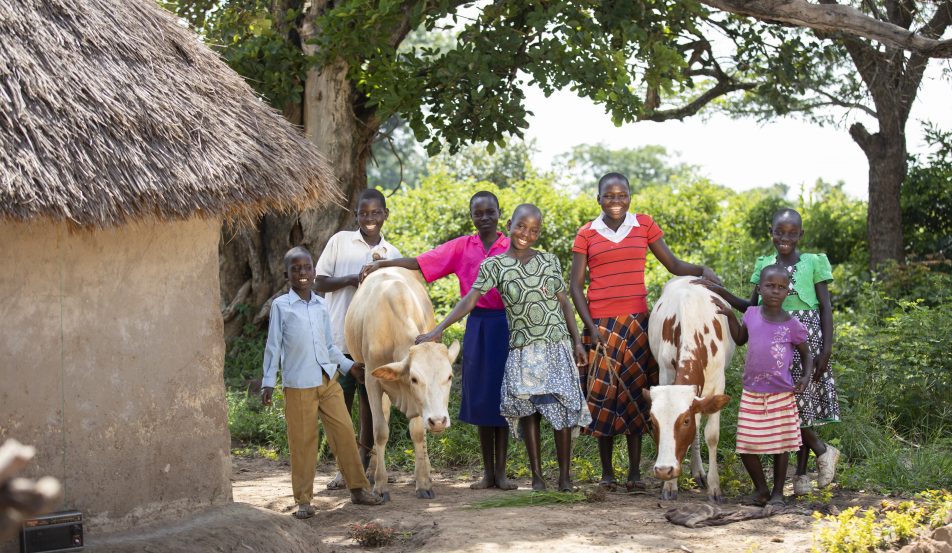Is Child Poverty Increasing?
Around the world, there are an estimated 365 million children who live in extreme poverty, with 1 billion having poor access to health, education, housing, nutrition, sanitation or water.
According to the UN: “There has been marked progress in reducing poverty over the past decades. According to the most recent estimates, in 2015, 10 per cent of the world’s population lived at or below $1.90 a day. That’s down from 16 per cent in 2010 and 36 per cent in 1990. This means that ending extreme poverty is within our reach. However, the decline has slowed.”
Before Covid, many strides had been taken to improve child poverty globally, with organisations rallying even more to help during the pandemic. But despite best efforts, Covid-19 saw an additional 150 million children plunged into poverty.
The question ‘how can we help reduce child poverty?’ is a complex one. Here, we take a look at some of the core areas of child poverty, the achievements made and the next steps to be taken, to ensure children everywhere have the right to a dignified childhood.
Education
Over 57 million primary aged children are not in school and around 250 million 5-to-12 year-olds cannot read or write.
Education and poverty are inextricably linked. Without education, children are often destined for low-skilled jobs with lower-earning capabilities than those who are educated. Yet, low-income families often need their children to stop attending school in order to work to contribute to the household income. With limited options available, the cycle continues.
Covid-19 made education for these children even harder, with the move to online learning impossible for those who don’t have access to even the most basic of necessities, let alone wifi and computers.
ChildFund supported 93,300 students around the world to access educational materials to continue learning during the Covid-19 pandemic.
How can we improve child education? Access to education is a fundamental human right and we must continue to advocate to governments to ensure this right is met. It’s also important to reach families before their children reach school age to show them the importance of education.
Health
Poverty impacts child development. It has a major impact on physical and mental health. Malnutrition, preventable diseases, exhaustion and poor nutrition, plus high stress levels can all take a toll on a child living in poverty.
That’s why 18 per cent of Childfund’s budget was put towards health and sanitation. This included community-led initiatives such as the creation of 150 ‘health huts’ in Senegal. These spaces supported women and children to learn more about hygiene and improved health practices.
How can we improve child health? While state-led initiatives like striving for Universal Health Coverage (UHC) is key, on-the-ground initiatives such as the project in Senegal empower people to take better care of their own health.
Child Mortality Rates
There’s good news here, with a report from UNICEF finding that child mortality rates have significantly dropped in recent years. In 1990, the number of children younger than five who died annually from preventable causes was 12.6 million. By 2012 this had almost halved to 6.6 million.
There’s still plenty of room for improvement though, particularly in Sub Saharan Africa which has the highest child and infant mortality rate in the world. Here, the figure currently sits at 98 deaths per 1,000 births.
The most common preventable causes of child mortality are premature birth, pneumonia, birth defects, newborn infections such as malaria and sepsis, birth complications and diarrhea. Childhood malnutrition is also an underlying cause of up to 45 per cent of child deaths.
How can we improve child mortality rates? Better healthcare for all, particularly during birth and during postnatal care is needed, alongside access to immunisations for common infections and diseases, better education of families to recognise signs of ill health, and improved sanitation, hygiene and access to water.
Child Labour
The statistics show that in just one generation (since the year 2000), child labour has decreased by 40 per cent globally. This is a dramatic result, but despite the overall decline, there are still an estimated 152 million children globally who are exploited as child labourers.
That’s nearly 1 in 10 children worldwide, with many completing hazardous work that directly endangers their health and wellbeing. Not only is there the physical and psychological impacts of child labour, but it also means that child is unable to access quality education.
How can we end child labour? Ending child labour needs a concerted effort from a vast cross-section of the global community. Businesses need to review their supply chains and implement practices to end child labour, governments must create and enforce child labour laws, and organisations, communities and individuals need to hold governments and companies accountable, and advocate for the rights of children by voting with their dollar.
Child Marriage
According to a report from UNICEF, around 21 per cent of young women globally were married before their 18th birthday and another 150 million girls will marry before their 18th birthday by 2030 unless progress is made.
There has been some improvement. In 2000 the figure for child marriage sat at 47 million and now it’s 37 million. Marriage before 18 is becoming illegal in more and more countries, but while child marriage still happens anywhere in the world, there is still work to be done.
How can we end child marriage? Laws are one step towards ending child marriage, but laws themselves are often not enough. This is especially true when it comes to rural and remote communities where females are often married when they hit puberty. Outreach and education directly to these communities is just as important as legal reforms.
The future of child poverty
While there are many organisations, individuals and governments working hard towards a future where no child lives in poverty, there is still plenty of work to be done. Lend your support by donating to Childfund today.






